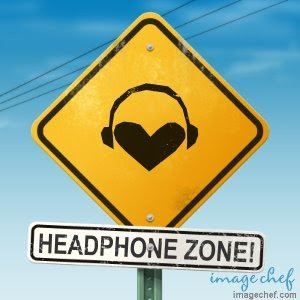The following podcast was included in the original Learning 2.0 program. Turn up your speakers and click the Play button to listen:
powered by ODEO

The word podcast is used to refer to a non-musical audio or video broadcast that is distributed over the Internet. What differentiates a podcast from regular streaming audio or video is that the delivery method for podcasts is often done automatically through RSS.
In 2005, "podcast" was named the "word of the year" by New Oxford American Dictionary and with the growth of podcasting over the last 24 months, it's easy to see why.
Podcasts take many forms, from short 1-10 minutes commentaries (like the one used at the beginning of this post) to much longer in person interviews or panel group discussions. There’s a podcast out there for just about every interest area and the best part about this technology is that you don’t have to have an iPod or a MP3 player to access them. Since podcasts use the MP3 file format, a popular compressed format for audio files, you really just need a PC (or portal device) with headphones or a speaker.
iTunes, the free downloadable application created by Apple is the directory finding service most associated with podcasts, but if you don’t have iTunes installed there are still plenty of options.
For this "thing" participants are asked to take a look at some popular podcast directory tools. Do some exploring on your own and locate a podcast that is of interest to you. Once found, you can easily pull the RSS feed into your Google Reader account as well, so that when new casts become available you’ll be automatically notified of their existence.
- To find out more about podcasts we'll start with our friends from the Common Craft Show - Podcasting in Plain English.
- Also take a look at the PodGrunt: What a podcast is and how it works video on YouTube.
- Finding podcasts
There are many, many podcast directories and other tools to help you find podcasts. Here are just four of the more popular ones that, unlike iTunes, don't require a software download:- Education Podcast Network - A directory of about 2,000 education-themed podcasts, organized by subject area.
- Learn Out Loud - A directory of about 1500 free "podcasts you can learn from."
- NPR Podcast Directory - A directory of 619 high-quality podcasts from National Public Radio and affiliates.
- Skip the Tuition: 100 Free Podcasts from the Best Colleges in the World
- PBS Podcasts - About thirty quality video podcasts from PBS.
- iTunes Store (requires download and installation of iTunes -- you are NOT required to install iTunes to complete this "Thing!) - Like it or not, the iTunes Store is the "mother of all" of podcasting directories, offering a catalog of gazillions (estimated) of FREE podcast titles, including over 10,000 titles specific to education.
Discovery Exercise
Part One:
The best way to learn about podcasts is to listen to a few of them. Sample a few of the educational podcasts below:
- Jamestown Elementary Podcast Project
- Radio WillowWeb
- Our City Podcast
- Cranbrook Composers' Podcasts (middle school)
- Think Youth Live (high school)
For educators: - The Tech Teachers
- Teachers Teaching Teachers
- TechPodZone
- Geek!Ed!
- Wisconsin Center for Education Research News
- Education Podcast with John Merrow - PBS
- Dragon Page with Class
- Grammar Girl's Quick and Dirty Tips
- Just One More Book
- Mugglecast - the #1 Harry Potter Podcast
- NPR Books podcast
- The Bob and Rob Show: English Lessons
- Authors on Tour Live
- Webster's Word of the Day
Science
Social Studies
- History Podcast
- PRI's The World - GeoQuiz (click on Podcasts)
Find and subscribe to a podcast. (Pick either Easy or Stretch - or both!)
Easy
Find a podcast (or two) that interests you using one or two of the podcast directories listed above -- ideally, related to your teaching/professional role -- and subscribe to it using your Google Reader. (Locate the RSS or Subscribe icon and click it, then select your Google Reader, or copy and paste the feed URL into the Subscribe field in your Google Reader). Listen to a bit of your subscription(s).
Stretch
Download and install iTunes. Find and subscribe to one or more podcasts of professional interest using iTunes. You can add any podcast feed to iTunes (even if it's not listed in the iTunes Store -- see the podcast directories above) by copying the podcast feed URL, then opening iTunes and selecting Advanced > Subscribe to Podcast and pasting the URL). Listen to a bit of your subscription(s).
Help Resources for iTunes:
- Get iTunes 8.1 - You do not need to provide your email address -- just UNcheck the email alert boxes!
- Apple iTunes Tutorial: Get Free Podcasts (~2 min)
Write a brief blog post sharing your initial thoughts about podcasting in education.
Points to include in your post:
- Which podcasts did you preview?
- What did you think?
- Which directories did you search and were you able to find podcasts of value?
- Do you have any ideas about incorporating existing podcasts into your classroom or professional learning?
- If you already use iTunes (or other podcatcher) and/or have an iPod or other MP3 player that you use for podcast listening, please share a bit about your experiences.
- If you are a podcaster, or have used podcasting with students, please share a bit about that as well.
Please include "Thing 17" in your post title.


No comments:
Post a Comment